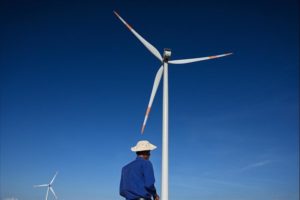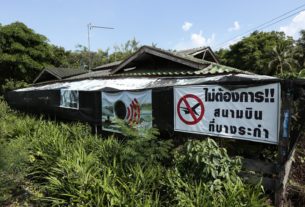 Covid Impact On Vietnamese Wind Threatens Global Supply Chain
Covid Impact On Vietnamese Wind Threatens Global Supply Chain
Embattled by the spread of the delta variant $6.7 billion in clean energy projects are under threat in Vietnam. Logistical and commissioning delays may push 4GW of wind projects beyond the November 2021 deadline necessary to access the country’s feed-in tariff (FiT). Without an extension to the deadline, Vietnam could miss a unique opportunity to build its wind industry and green its economy.
With COP26 on the horizon, co-ordinated policy making must be a priority to ensure that no movement towards a low carbon future is lost. The FiT was part of a repositioning of Vietnam’s energy plans, which showed the potential for rapid renewable energy deployment. While last year Vietnam only commissioned a few hundred megawatts of wind to a total of 500MW, over 4,000MW of project have requested grid connection in 2021. The Global Wind Energy Council (GWEC) have estimated that $6.7 billion in clean energy investment (in capital investment and operational costs), and 21,000 jobs, are at risk.
Over the last few years, Vietnam has emerged as a leading market for wind and renewable energy investment in Asia, and particularly South East Asia. Vietnam has identified wind as a key sector for energy security and system decarbonization in Resolution 55, as well as in its draft Power Development Plan. The wind FiT was introduced by Decision 39/2018 and set at 8.5 US cents/kWh for all projects achieving commercial operations (COD) before 1 November 2021. This policy provided a clear route to market for onshore wind projects and resulted in an enormous investment pipeline of more than 140 wind projects signing Power Purchase Agreements with the state-owned grid operator, Electivity Vietnam, as of August 2021.
To date Vietnam has managed its Covid response well but pandemic related disruptions to worker mobility, lack of air freight, port restrictions and the like have affected many countries in the last year and a half. The challenge is to look to the longer term and the potential for the development of new, sustainable, domestic energy industry. Ben Backwell, CEO of GWEC points out that many countries have implemented relief packages or deadline extensions to ensure that critical impacts are managed. He says this is critical to supporting continued investment in, and development of, clean energy.
If Covid restrictions prevent the industry from completing and commissioning projects by the deadline, Vietnam’s wind industry could be headed for years in limbo. Without the FiT, operators won’t be able to generate expected revenue, and bank support may well be withdrawn. There are several aspects to this which will affect not simply the wind industry, but climate action generally and the industrial supply chain specifically.
According to Climate Action Tracker (CAT), Vietnam has a long way to go in terms of its carbon emissions reduction plans.. It’s updated national development contribution (NDC), intended to show how it plans to contribute to emissions reduction under the global climate Paris Agreement, showed a slightly lower emissions reduction plan, below what is necessary to reach overall climate goals. The CAT has rated the NDC as ‘critically insufficient’ for reaching climate targets. The country has shown a genuine commitment to increasing its renewable energy sources but failure to protect the potential highlights the danger of a lack of co-ordination in policy making and aa focus on short term needs. There is no question that Covid is the priority but policymakers must look to the future too.
This is where the potential impact on the supply chain comes into play. Around the world increasing numbers of international manufacturers are driving emissions reductions throughout their supply chains, with many committing to action under the RE100. That means a commitment to 100% renewable energy, as a primary pathway to lower emissions is the use of green energy. Without that, Vietnamese manufacturers may struggle with a global supply chain accelerating towards a low carbon model.
If an auction programme was in place, as it is for solar, that might provide another route to market. However as Mark Hutchinson, Chair of GWEC’s South East Asia Taskforce says, “There is no clear path to an alternative, with a minimum 1-2 years required to design, run, award and finish projects under an auction scheme.” That is one of the key reasons that GWEC is calling for a six-month extension of the FiT deadline.
There is no question that the Vietnamese government’s focus is rightly on controlling Covid. But with 2-3 weeks quarantine on entering the country, with a further 2 weeks of quarantine for each province entered, the logistical challenges in completing full commissioning within less than two months could have a catastrophic impact on the industry. As of August 2021, an industry survey conducted by GWEC estimates that 4,000MW of mainly onshore wind projects in Vietnam are severely challenged by these extenuating circumstances and are now at risk of missing the November deadline for the wind FiT. The survey found that more than 70% of wind projects which had submitted grid connection requests by August 3, 2021 will not achieve COD by the deadline.
As yet, Vietnam has no green recovery programme and even prior to today, much of the $13 billion in economic stimulus funds deployed have been towards tax breaks, interest rates etc, maintaining current economic models. Given the urgency of the situation a further stimulus programme being debated and may even be announced this week. However, Hutchinson says, “Vietnam has made amazing progress in its commitments to renewables and carbon reduction but it is our understanding that there is no specific relief for wind.”
Hutchinson makes clear that GWEC supports establishing clear criteria for eligibility for this deadline postponement, not a blanket extension. This is in line with international relief measures around the world which have been implemented to support the wind sector from the impacts of the pandemic. For instance, in May 2020 the US provided one year of “safe harbour” for wind projects to complete and continue accessing a clean energy tax credit, while in June 2021, India issued a 2.5-month commissioning extension for renewable energy projects, in recognition of the lockdown measures which lasted from April to mid-June.
The EU and US are implementing or exploring ‘green infrastructure’ approaches as an engine for post-Covid economic recovery. China is reported to be assessing the development of key sectors (including energy, industry, transport etc) in terms of achieving carbon neutrality. Whether you believe climate change to be a ‘real’ problem or not, country, investor and citizen concern are changing the regulatory, reporting, financial and operational frameworks of business around the world. That’s not something where Vietnam – or any other country – can afford to be left behind.
Source: https://www.forbes.com/sites/feliciajackson/2021/09/09/covid-impact-on-vietnamese-wind-threatens-global-supply-chain/?sh=1706273426f1


